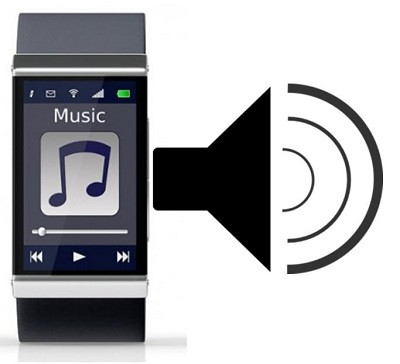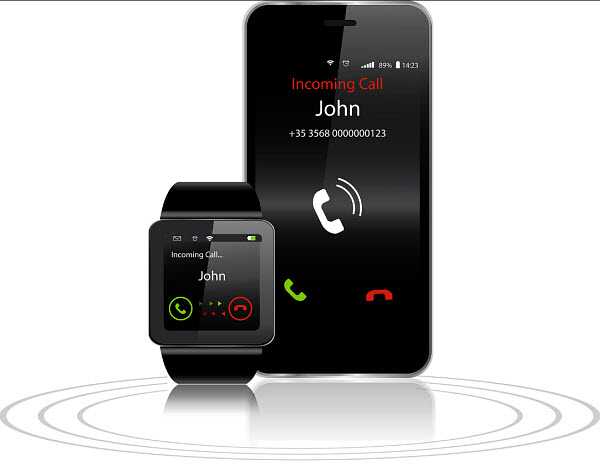The wearable technology device has just been updated to include volume controls, among other things.
Pebble recently rolled out a range of new updates that have added some rather small but quite meaningful improvements to its popular smartwatch, including a few that have been expected for some time now.
Among these updates, one of the most significant is the addition of volume controls to this wearable tech.
Aside from that, the smartphone now also has the ability to recognize apps from the launcher of the device. Owners have been waiting for a long time for the Pebble to offer them the opportunity to control the music volume from their wristwatches, which have been able to control the playback since the wearable tech device first hit the market shelves.
The company announced in a blog post that it was bringing this new control to its smartwatch.
 The blog post read that “It’s been a long time since we first demoed volume control in the Pebble Music app back in the day, so we’re really glad to be bringing this feature onboard.” The wearable tech update also gave the ability for apps to be recognized in its launcher, and for those applications to be manually sorted.
The blog post read that “It’s been a long time since we first demoed volume control in the Pebble Music app back in the day, so we’re really glad to be bringing this feature onboard.” The wearable tech update also gave the ability for apps to be recognized in its launcher, and for those applications to be manually sorted.
In previous versions, the order in which the applications appeared had been static and was not customizable by the wearer. That has been changed in this latest update so that users are able to place items within the launcher into the order that they desire by holding down the select button until the app appears to tremble. It can then be moved to its new position on the list.
These two small but meaningful additions were added as a part of an update to the firmware, itself. This means that the smartwatch users will be required to update their current mobile device app by selecting the support menu and the “check for updates” option. The users of the Pebble through iOS will need to update their iOS application before they will be able to obtain their new firmware. That app was also updated just recently to be able to support the new firmware as well as to add support for iBeacon.
According to a recent report, the so-called iWatch will finally throw the tech giant into the wearables market.
According to a report in the Japanese newspaper “Nikkei”, Apple is getting ready to take its first steps into the smartwatch marketplace with a wearable technology device that will feature an OLED curved screen and will start to ship in October.
The report stated that this device will have features that will allow the wearer to monitor and track health status.
The Nikkei report, which cited anonymous sources, said that Apple intends to manufacture between 3 and 5 million of these smartwatch wearable devices every month. This would represent more than the total global sales of wristwatch-like smart devices in 2013. This wearable device, which has been called the iWatch by those who have been waiting for its unveiling – though whether or not that will actually be its name or not is unknown – will have a range of different mhealth, tracking, and smartphone related functions.
The smartwatch will provide the wearer with health stats while connecting to an iPhone.
 So far, the Nikkei source said that the touchscreen will feature a curved organic light-emitting diode (OLED), and will collect certain types of health and fitness data such as sleep activity, calorie burning, and blood oxygen and glucose levels. It will also allow messages sent over smartphones to be accessed through the wearable technology.
So far, the Nikkei source said that the touchscreen will feature a curved organic light-emitting diode (OLED), and will collect certain types of health and fitness data such as sleep activity, calorie burning, and blood oxygen and glucose levels. It will also allow messages sent over smartphones to be accessed through the wearable technology.
This report was issued just as Apple was bringing its 2014 Worldwide Developers Conference, a week-long event – to a close. During that conference, the company placed the spotlight on its newly debuted iOS 8 next generation of mobile operating system. It also brought out the OS X Yosemite for PCs.
The event indirectly brought wearable technology and the expected smartwatch into the headlines through the inclusion of the programming interfaces into iOS 8, which include the HealthKit. That would allow health and fitness applications to be able to communicate with each other, provided that the user grants permission. This type of feature would be exceptionally practical in a wearable device that could monitor and track biofeedback. Though this could be quite the coincidence, it is much more likely that this is part of the company’s build toward the wearables launch.
 The blog post read that “It’s been a long time since we first demoed volume control in the Pebble Music app back in the day, so we’re really glad to be bringing this feature onboard.” The wearable tech update also gave the ability for apps to be recognized in its launcher, and for those applications to be manually sorted.
The blog post read that “It’s been a long time since we first demoed volume control in the Pebble Music app back in the day, so we’re really glad to be bringing this feature onboard.” The wearable tech update also gave the ability for apps to be recognized in its launcher, and for those applications to be manually sorted.
 So far, the Nikkei source said that the touchscreen will feature a curved organic light-emitting diode (OLED), and will collect certain types of health and fitness data such as sleep activity, calorie burning, and blood oxygen and glucose levels. It will also allow messages sent over smartphones to be accessed through the wearable technology.
So far, the Nikkei source said that the touchscreen will feature a curved organic light-emitting diode (OLED), and will collect certain types of health and fitness data such as sleep activity, calorie burning, and blood oxygen and glucose levels. It will also allow messages sent over smartphones to be accessed through the wearable technology.